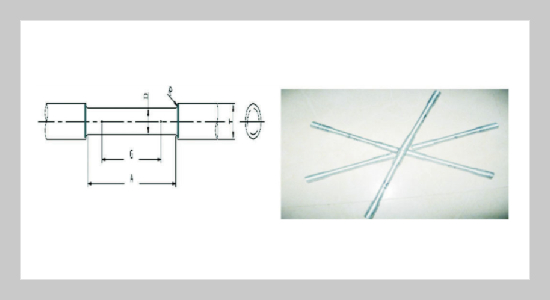REFERENCES
- [1] Schwartz, M. M., Composite Materials: Processing, Fabrication and Application, Prentice Hall, USA (1997).
- [2] Ceschini, L., Minak, G. and Morri, A., “Tensile and Fatigue Properties of the AA6061/20 vol.% Al2O3p and AA7005/10 vol.% Al2O3p composites,” Journal of Composite Science and Technology, Vol. 66, pp. 333�342 (2006). doi: 10.1016/j.compscitech.2005.04.044
- [3] Kaynak, C. and Boylu, S., “Effects of SiC Particulates on the Fatigue Behaviour of an Al-Alloy Matrix Composite,” Journal of Materials and Design, Vol. 27, pp. 776�782 (2006). doi: 10.1016/j.matdes.2005.01.009
- [4] Hashim, J., Looney, L. and Hashmi, M. S. J., “Particle Distribution in Cast Metal Matrix Composites - Part I,” Journal of Material Processing Technology, Vol. 123, No. 2, pp. 251�257 (2002). doi: 10.1016/S0924- 0136(02)00098-5
- [5] Prangnell, P. B., Barnes, S. J., Withers, P. J. and Roberts, S. M., “The Effect of Particle Distribution on Damage Formation in Particulate Reinforced Metal Matrix Composites Deformed in Compression,” Materials Science and Engineering A, Vol. 220, No. 1�2, pp. 41�56 (1996). doi: 10.1016/S0921-5093(96)10461-5
- [6] Yotte, S., Breysse, D., Riss, J. and Ghosh, S., “Cluster Characterization in a Metal Matrix Composite,” Mater. Charact., Vol. 46, No. 2�3, pp. 211�219 (2001). doi: 10. 1016/S1044-5803(01)00126-7
- [7] Doel, T. J. A. and Bowen, P., “Tensile Properties of Particulate Reinforced Metal Matrix Composites,” Composites Part A, Vol. 27A, pp. 655�665 (1996). doi: 10.1016/1359-835X(96)00040-1
- [8] Deuis, R. L., Subramanian, C. and Yellup, J. M., “Dry Sliding Wear of Aluminium Composites - A Review,” Composites Science and Technology, Vol. 57, No. 4, pp. 415�443 (1997). doi: 10.1016/S0266-3538(96) 00167-4
- [9] Bindumadhavan, P. N., Chia, T. K., Chandrasekaran, M., Keng, W. H., Nee, L. L. and Prabhakar, O., “Effect of Particle-Porosity Clusters on Tribological Behavior of Cast Aluminum Alloy A356-SiCp Metal Matrix Composites,” Mater Sci. Eng. A, Vol. 315, No. 1�2, pp. 217�226 (2001). doi: 10.1016/S0921-5093(00) 01989-4
- [10] Hong, S. J., Kim, H. M., Huh, D., Suryanarayana, C. and Chun, B. S., “Effect of Clustering on the Mechanical Properties of SiC Particulate Reinforced Aluminium Alloy 2024 Metal Matrix Composites,” Mater Sci. Eng A, Vol. 347, pp. 198�204 (2003). doi: 10. 1016/S0921-5093(02)00593-2
- [11] Llorca, J., “Fatigue of Particle- and Whisker-Reinforced Metal-Matrix Composites,” Progr. Mater. Sci ., Vol. 47, No. 3, pp. 283�353 (2002). doi: 10.1016/ S0079-6425(00)00006-2
- [12] Bonnen, J. J., You, C. P., Allison, J. E. and Jones, J. W., “Fatigue Properties of SiC Particulate Reinforced AlAlloys,” Proceeding of 4th International Conference on Fatigue, (ed. Kitagava, H., and Tanaka, T.), Honolulu, pp. 887�892 (1990).
- [13] Srivatsan, T. S. and Auradkar, R., “Effect of Silicon Carbide Particulate on Cyclic Plastic Strain Response Characteristic and Fracture of Aluminium Alloy Composites,” International Journal of Fatigue, Vol. 14, No. 6, pp. 355�366 (1992). doi: 10.1016/0142-1123 (92)90223-Y
- [14] Srivatsan, T. S., Lanning, D. and Soni, K. K., “Cyclic Strain Resistance and Cyclic Fracture Behaviour of 2124 Aluminium Alloy,” International Journal of Fatigue, Vol. 15, No. 3, pp. 231�242 (1993). doi: 10.1016/ 0142-1123(93)90181-O
- [15] Everett, R. K. and Arsenault, R. J., “Metal Matrix Composites: Mechanism and Properties,” Acta Metallurgica, Vol. 38, No. 2, pp. 712�717 (1991).
- [16] Llorca, J., “A Numerical Study of the Mechanisms of Cyclic Strain Hardening in Metal-Ceramic Composites,” Acta Metallurgica, Vol. 42, No. 1, p. 151 (1994). doi: 10.1016/0956-7151(94)90058-2
- [17] Srivatsan, T. S. and Parash, A., “Effect of Particulate Silicon Carbide on Cyclic Strain Resistance and Fracture Behaviour of X2080 Aluminium Alloy Metal Matrix Composites,” Engineering Fracture Mechanics, Vol. 49, No. 5, pp. 751�772 (1994). doi: 10.1016/ 0013-7944 (94)90038-8
- [18] Corbin, S. F. and Wilkinson, D. S., “Low Strain Plasticity in a Particulate Metal Matrix Composite,” Acta Metallurgica, Vol. 42, No. 4, pp. 1319�1327 (1994). doi: 10. 1016/0956-7151(94)90148-1
- [19] Llorca, J., Needleman, A. and Suresh, S., “An Analysis of the Effects of Matrix Void Growth on Deformation and Ductility in Metal-Ceramic Composites,” Acta Metallurgica, Vol. 39, No. 10, pp. 2317� 2335 (1991). doi: 10.1016/0956-7151(91)90014-R
- [20] Llorca, J., Suresh, S. and Needleman, A., “An Experimental and Numerical Study of Cyclic Deformation in Metal-Matrix Composites,” Metallurgical Transaction, Vol. 23A, pp. 919�934 (1992). doi: 10.1007/ BF02675568
- [21] Han, N. L., Wang, Z. G. and Sun, L. Z., “Effect of Reinforcement Size on Low Cycle Fatigue Behaviour of SiC Particle Reinforced Aluminium Matrix Composites,” Scripta Metallurgica et Materialia, Vol. 33, No. 5, pp. 781�787 (1995). doi: 10.1016/0956-716X(95) 00281-Y
- [22] Sasaki, M., Lawson, L. and Meshii, M., “Low-Cycle Fatigue Properties of a SiC Whisker-Reinforced 2124 Aluminium Alloy,” Metallurgical and Materials Transaction, Vol. 25A, pp. 2265�2274 (1994). doi: 10. 1007/BF02652326
- [23] Srivatsan, T. S. and Parash, A., “The High Strain Cyclic Fatigue and Fracture Behaviour of 2090 Aluminium Alloy,” Engineering Fracture Mechanics, Vol. 40, No. 2, pp. 297�309 (1991). doi: 10.1016/0013-7944 (91)90265-3
- [24] Kim, S. B., Koss, D. A. and Gerard, D. A., “High Cycle Fatigue of Squeeze Cast Al/SiCw Composites,” Mater Sci Eng A, Vol. 277, pp. 123�133 (2000). doi: 10.1016/S0921-5093(99)00553-5
- [25] Bloyce, A. and Summers, J. C., “Static and Dynamic Properties of Squeeze Cast A357-SiC Particulate Duralcan Metal Matrix Composite,” Mater Sci. Eng. A, Vol. 135, pp. 231�236 (1991). doi: 10.1016/0921- 5093(91)90568-8
- [26] Mares, M., “Some Issues on Tailoring Possibilities for Mechanical Properties of Particulate Reinforced Metal Matrix Composites,” Journal of Optoelectronics and Advanced Materials, Vol. 3, pp. 119�124 (2001).
















